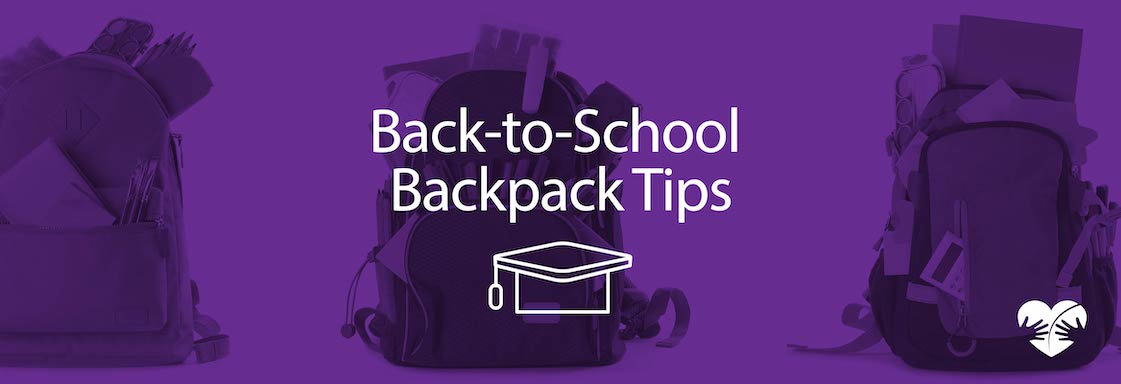It’s back-to-school season, and the excitement of choosing a backpack for the year is here—so many different colors, shapes, patterns, and prints to choose from. However, there are things to look for when picking a backpack to ensure your child is not experiencing back, shoulder, or neck pain throughout the year. Check out our tips for proper backpack use below.
1. Choose the correct size of a backpack and the appropriate position for your child.
A backpack should ideally be no larger than the size of your child’s back. It should rest evenly in the middle of their back, and both shoulder straps should be adjustable enough to easily put on and remove the backpack without any difficulty, while still allowing for comfortable arm movement. The straps should not be so loose that the bag hangs below the lower back and rests on the buttocks. If available, use the chest and waist straps for additional support.
2. Wear both straps.
Using one strap puts excessive wight on one side of the body. Wearing both shoulder straps helps distribute the backpack’s weight evenly.
3. Lighten the load for your child.
Ensure that the backpack weighs no more than 10-15% of your child’s body weight. Have your child carry only the necessary items for the day. Organize the contents of the backpack, placing the heaviest items closest to their back.
If your child complains of neck, shoulder, or back pain that you suspect may be related to a poorly fitting backpack, consult with your pediatrician or physical therapist.
For example:

Selecting the appropriate backpack is also essential for wheelchair users. Here are some pieces of advice to keep in mind during this back-to-school season shopping:
4. Choose the right size and placement for your child’s backpack.
Ensure that the backpack is small enough to fit on the back of the wheelchair. No part of the bag, including the straps, should be touching the wheels. Both shoulder straps should be on each wheelchair push handle (if your wheelchair has them).
5. Lighten the load for your child.
A heavy backpack can increase the risk of your wheelchair tipping backward. A heavy bag makes propelling the wheelchair more challenging, leading to increased energy consumption throughout the day.
Consult your physical therapist for the optimal placement of the backpack on your wheelchair.








